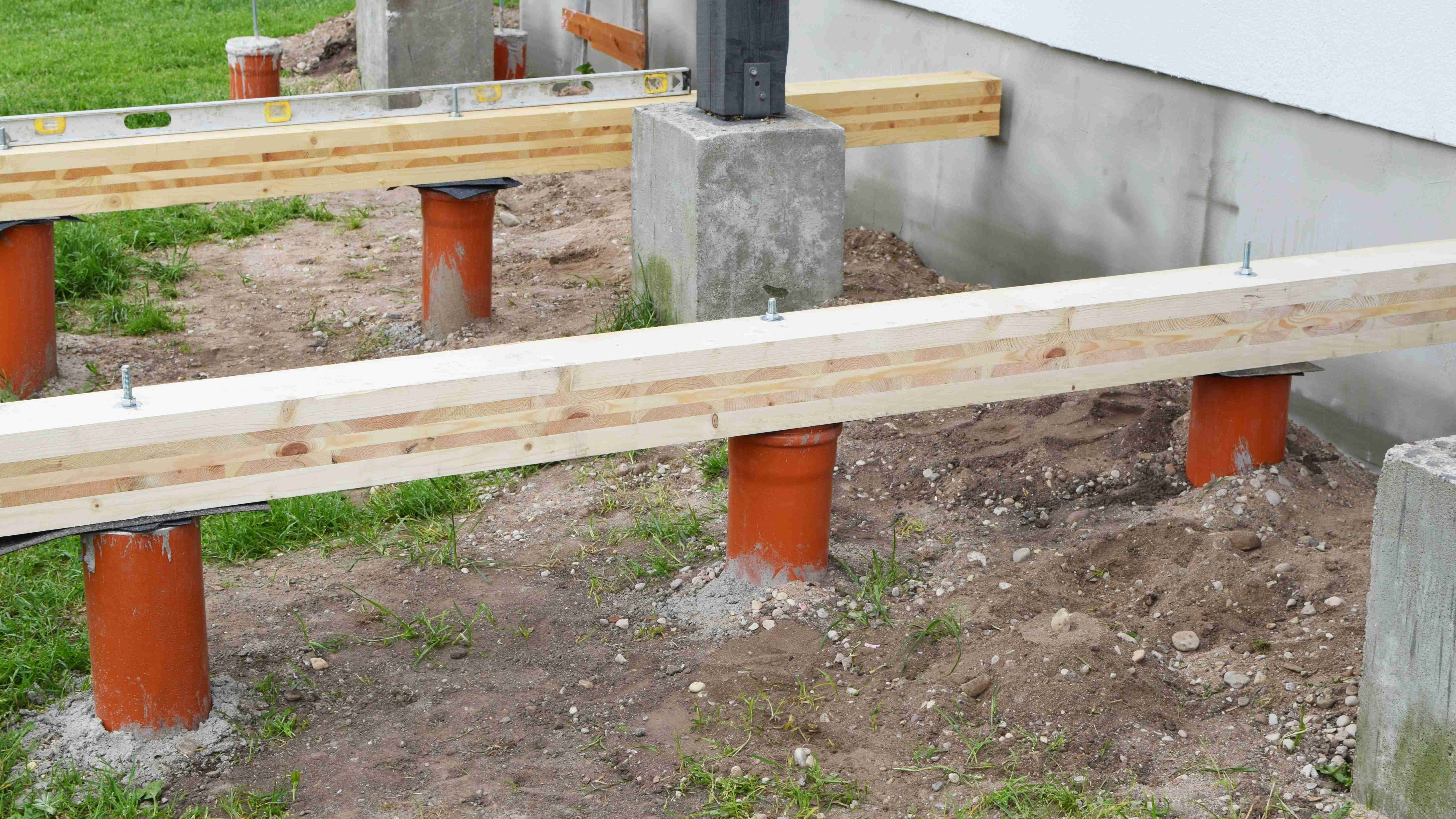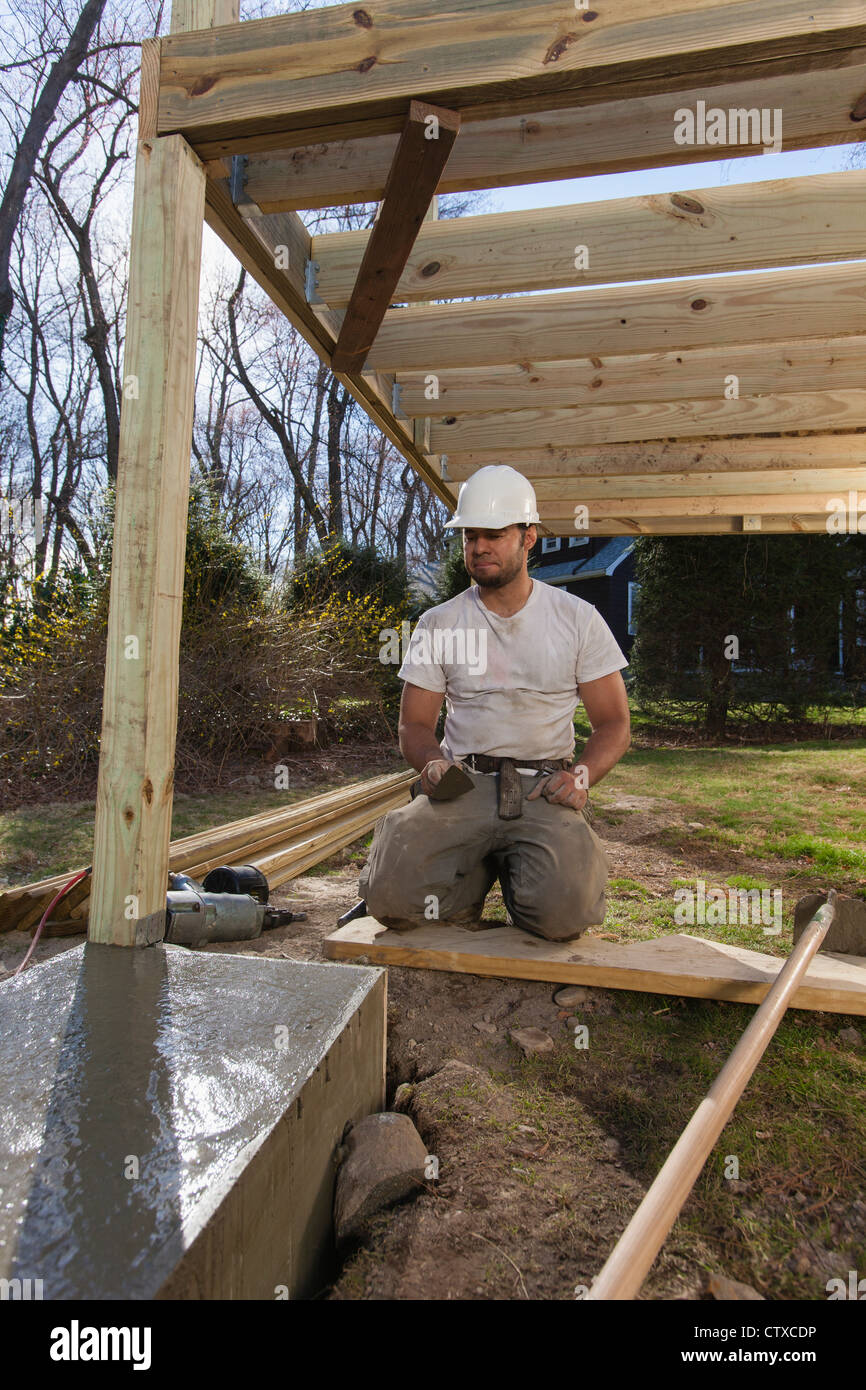Make The Most Of the Life-span of Your Deck With Solid and reputable Grounds
As homeowners, we spend a significant quantity of time and sources right into producing the excellent exterior room. A deck is often the focal point of that area, providing a location to kick back, entertain, and delight in the elegance of nature. Nonetheless, in order to fully maximize the life expectancy of your deck, it is essential to make certain that it is improved trusted and solid grounds. These footings develop the foundation of your deck, offering stability and support, and are often the difference between a deck that lasts for decades and one that requires constant fixings. In this discussion, we will explore the importance of trustworthy footings, the various sorts of strong footing materials, appropriate setup techniques, and just how to maintain and inspect your deck's grounds to avoid damages. Whether you are in the process of looking or developing a brand-new deck to enhance the longevity of your existing one, join us as we uncover the tricks to a deck that stands the test of time.
Significance of Reliable Footings
When it comes to making best use of the life-span of your deck,The relevance of dependable grounds can not be overemphasized. The footings offer as the foundation upon which the whole framework rests, offering security and assistance. Without a solid footing, the deck is at risk to shifting, sinking, and even collapse, which can considerably minimize its lifespan and present safety and security risks.

Picking the right kind of footing is likewise important. The most usual types include concrete footings, helical piers, and sonotubes. Variables such as dirt conditions, environment, and the size of the deck will identify the most appropriate alternative. Working with a specialist to analyze the soil, layout the footings, and make sure appropriate installment is extremely advised.
Buying dependable footings might include extra expense and effort upfront, yet it is a beneficial investment that will certainly contribute to the long-lasting sturdiness and security of your deck. By making certain a strong foundation, you can appreciate your deck for several years to come, understanding that it is constructed to stand up to the examination of time.
Types of Strong Footing Materials
To make certain the security and durability of your deck, it is important to consider the various kinds of strong ground materials offered. The choice of footing material is vital as it gives the needed assistance and security to withstand the weight and load of the deck structure.
One reliable and typical material used for deck footings is concrete. Concrete footings are resilient and provide superb security. They can be poured directly into the ground or utilize precast concrete grounds for easier installation. An additional choice is helical piers, which are steel shafts with helical plates that are screwed into the ground. These piers use superb load-bearing ability and can be made use of in various dirt problems.
For areas with bad dirt conditions, such as large or loose dirts, a ground system that makes use of steel or composite piers may be favored. Deck Footings. These piers are driven deep into the ground to reach steady dirt layers, guaranteeing the security of the deck
In some situations, deck grounds can also be built using cured lumber. It is essential to make sure that the lumber is effectively dealt with to resist rot and decay created by direct exposure to moisture and insects.
When choosing a ground material for your deck, it is essential to take into consideration aspects such as soil conditions, environment, and regional structure codes. Consulting with a professional service provider or structural engineer can help figure out one of the most appropriate ground product for your particular deck task.
Correct Installment Strategies for Grounds
Taking into consideration the relevance of making certain security go to my site and longevity for your deck, it is necessary to understand the proper installation techniques for grounds. The success of additional hints your deck task counts heavily on the integrity of its foundation, which is why adhering to the proper installment strategies is vital.
Firstly, it is needed to determine the appropriate dimension and deepness of the footings based on the layout and lots demands of your deck. This information can be acquired from building codes or via consultation with an architectural designer. As a general policy, footings should go to the very least 12 inches in diameter and prolong listed below the frost line to stop shifting or settling.
When the dimensions are developed, the following action is excavation. Digging the holes for the grounds ought to be done with accuracy, making sure they are deep adequate and have a level bottom. Deck Footings. This will certainly offer a secure base for the footings
To further improve the stability of the grounds, it is advised to utilize a concrete mix with a stamina of at the very least 3,000 psi. This will certainly guarantee the grounds can endure the weight and pressures exerted by the deck.
Throughout installment, it is important to keep the footings level and aligned correctly. This can be achieved by using a level and string lines to assist the placement of each footing.
Keeping and Inspecting Your Deck's Footings
Normal maintenance and detailed evaluations are essential for guaranteeing the long-lasting security and safety of your deck's footings. Gradually, grounds can catch tear and use, climate condition, and dirt activity, which can compromise their structural stability. To take full advantage of the life-span of your deck's grounds, it is crucial to execute a normal upkeep regimen and conduct extensive assessments.

Additionally, it view is vital to examine footings for any kind of indications of damages or degeneration. This includes monitoring for splits, splits, or collapsing concrete, in addition to any indications of activity or settlement. Any problems should be attended to promptly to prevent additional damages and guarantee the stability of the deck.
Moreover, it is advised to inspect the surrounding dirt for any kind of signs of erosion or moving. Dirt activity can impact the stability of the footings, so it is very important to resolve any kind of soil-related issues quickly.
Indications of Ground Damages and Just How to Address Them
An additional indication of footing damages is splitting or collapsing of the concrete footings. If you observe any type of splits or degeneration in the grounds, it is important to have them checked and fixed by a professional. Keep in mind, resolving footing damage promptly can aid ensure the long-term security and safety of your deck.
Final Thought
In conclusion, guaranteeing the integrity and toughness of grounds is important for making the most of the life expectancy of your deck. By utilizing solid ground products and effectively mounting them, you can avoid damage and preserve the stability of your deck. Routine maintenance and assessments will certainly additionally aid recognize any kind of indicators of footing damages and permit prompt repair services. Ultimately, taking these measures will assist preserve the stability and durability of your deck.
These grounds create the structure of your deck, supplying stability and assistance, and are commonly the distinction in between a deck that lasts for decades and one that needs consistent repairs. In this conversation, we will discover the significance of trustworthy footings, the various types of solid footing materials, appropriate installation methods, and how to keep and check your deck's footings to protect against damages.Regular maintenance and comprehensive assessments are necessary for making certain the long-lasting stability and security of your deck's grounds. Remember, dealing with footing damage quickly can help guarantee the lasting security and safety of your deck.
By making use of strong footing products and appropriately mounting them, you can protect against damage and keep the stability of your deck.